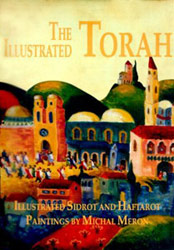Tomb of the Sanhedrin in Sanhedria, Jerusalem. it is important to realize that we are talking here about a 1st century CE Jewish tomb in Greco-Roman Jerusalem.
The A, B, C, D rating system has left us with the likely existence of a simple gable and wreath motif in the Roman world and now in a Jewish setting of first century Jerusalem.
Tomb of the Sanhedrin, Tomb of the Sanhedrin Jerusalem
The Tombs of the Sanhedrin are located in a small park on the edge of Jerusalem’s ultra-Orthodox Sanhedria neighborhood.
Shady paths link the many Second Temple era rock-cut tombs, a landmark the locals used to call “the Tombs of the Judges.”
They are first mentioned in 1235 by Rabbi Jacob the Emissary, who includes them among the “Tombs of the Righteous” he saw on his travels to raise money for a yeshiva (perhaps in Paris). Rabbi Jacob describes “a tomb in which many wise men are buried, a very beautiful building, a cave within a cave.”
By 1450, Rabbi Joseph Halevi identified these graves as the Tombs of the Sanhedrin, and a 1659 drawing reveals a beautiful structure with an arched colonnade.
That is long gone, but the faithful still place prayer notes in the tomb doorways, a glimpse of which reveals not only ancient burial customs but the power of memory and tradition.
Navigation
Travel Partners
Advertisement
Searches related to: Tomb of the Sanhedrin Jerusalem
Jerusalem Ancient Tombs
Sanhedria Jerusalem Cemetery
From the Sanhedrin Tombs to Jason's Tomb
Whether prophets or kings, heads of the Sanhedrin or priests, the high and mighty or the common people, from the First and Second Temple periods - all are buried under the houses of modern Jerusalem outside the city walls. As the modern city expands, more tombs are being discovered, giving a new meaning to the terms "Upper City" and "Lower City." On this tour we will visit some Second Temple period tombs. As we have already seen in our visit to the Kidron Valley funerary monuments (Tour 5), here too we will observe how the Hellenistic culture that penetrated into Palestine in the late fourth century BCE influenced the fashioning of tombs in the city. Unlike the tour of the Kidron Valley, however, which focused mainly on the character- istic features of the monuments built next to the tombs, in this tour we will examine the tombs themselves, their structure, the burial practices observed, and the world view reflected by these customs. Our visit to the necropolis of the Second Temple period requires us to go beyond the city bounds of the time. This reflects what would nowadays be termed a "municipal bylaw" and was in effect at the time, as the Mishnah attests: "Carrion, tombs, and tanning yards must be kept fifty cubits from a town" (Bava Batra 2:9). The dead were not buried within the city walls in order to maintain the proper level of public sanitation. Along with this legislation, which applied to every Jewish town and city, an additional limitation was imposed in Jerusalem because of its status as a sacred city. The Temple called for the utmost observance of the purity laws. We may assume that tombs were kept away from the city for fear of corpse impurity, which is regarded as the gravest type of impurity. As Jerusalem expanded during the course of the Second Temple period, the city reached previously uninhabited areas that had been used for burial in earlier times. How could the necessities of the growing city be accommodated to the graveyards that stood in its way? The city's residents apparently adopted a very practical solution: the contents of the early tombs were removed and transferred to more distant areas. An echo of this procedure is to be found in early Jewish sources: All tombs may be removed, except for the tomb of the king and the tomb of the prophet (Tosefta, Bava Batra 1:9). Today, the burial caves of the Second Temple period are no more than archaeological sites that perpetuate a dead past that was and is no more. On the other hand, during the tour we will also visit a tomb that is exceptional in this respect, the cave of Simeon the Just. It is an example of the transformation of ancient burial caves into vibrant sites that are connected with ancient traditions associated with exemplary individuals in Jewish history. These sites attract large numbers of people who come there to pray and celebrate.
Tomb of the Sanhedrin
The Illustrated Torah - Chumash (Five Books of Moses)
Fully illustrated, colorful and attractive, and includes the weekly Torah portions and the Haftarot readings (weekly readings from the Writings and the Prophets).
Inside the Book
God said, "Let there be light"; and there was light.
List Price: US$60.00 Your Price: US$48.00 You save: 20%
Browse our free encyclopedia by alphabet:
A B C D E F G H I J K L M N O P Q R S T U V W X Y Z |
| Join the Club for more information about Tomb of the Sanhedrin Log In |
Join the Club - Advertise With Us - Contact Us - Links - Privacy Policy
JERUSALEMPEDIA.All Rights Reserved. |
The biggest Jerusalem content encyclopedia on the Internet. Jerusalempedia.com is a site that offers a full range of terms related to Jerusalem.
Our Mission is to create the most comprehensive and definitive source of information available on Jerusalem anywhere. We are in the process of compiling the world's most comprehensive source of inter-related encyclopedic information sources covering every subject of Jerusalem to our visitors. |
.jpg)
.jpg)



